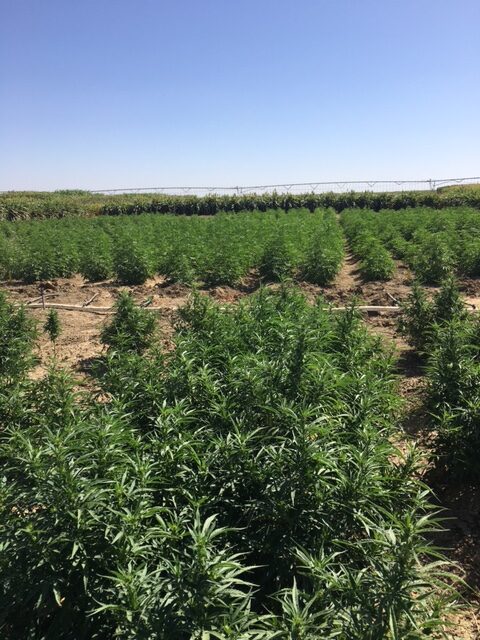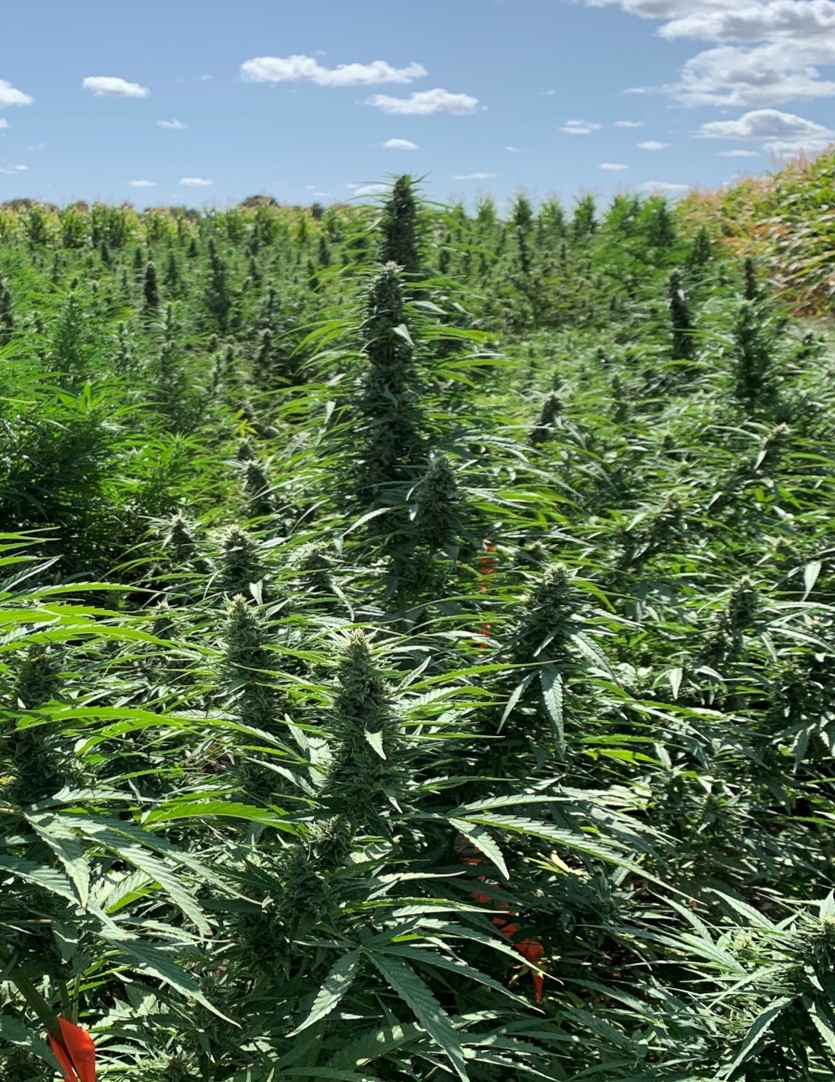UCCE Farm Advisor for Sutter, Yuba, and Colusa counties Sarah Light and UCCE Weed Specialist Brad Hanson simulated the drift symptoms in the 2019 project, photographed the affected plants and published their work in a May 2021 UC ANR publication.
Light said when asked why the pair pursued the project. “It wasn’t a response to something that happened. It was just a way to provide a tool so if drift does happen, growers know what it looks like, and to make sure there aren’t any unfounded accusations against our existing growers who are managing their commodities.
“We have a new crop in the landscape,” she added. “It is high value. We have our existing growers who are managing their crops, and we want to be able to protect everybody from any issues.”
Hemp production was legalized in the U.S. under the 2018 Farm Bill. According to CDFA, there are now more than 550 registered hemp growers in the state and more than 50,000 acres registered for hemp production. The crop has many uses, including as a food product, in textiles and biofuels, but it is the medicinal properties of hemp-derived cannabidiol (CBD) that is the most sought after.
Scott Bowden, deputy ag commissioner for Sutter County, who is in charge of pesticide use enforcement, said that to date, there hasn’t been a complaint of herbicide drift on hemp in the county. But he is concerned, nonetheless.
“I’ve been waiting since 2019 for drift incidents,” he said, “but we haven’t gotten any complaints yet. Which isn’t to say that it hasn’t happened; we just haven’t had any complaints.”
Bowden believes one reason why involves the timing of herbicide use in rice, a dominant crop in the county, in relation to when hemp is transplanted. “They plant the crop [hemp] after July, after the rice herbicides have been used,” Bowden said. “That has really helped keep drift issues down.
“A big reason we have not had any drift complaints is because we have professionally trained and licensed applicators who spray for a living, and no one wants to drift onto any other crops,” he added.
Proper Diagnosis Critical
Typically, when drift is misdiagnosed, an abiotic issue is the culprit, according to Light. Biological organisms, such as insects and diseases, move in a nonlinear pattern and typically are not associated with drift, she said.
“Certainly, if you had one hemp plant damaged in the middle of your field, that is never going to be a drift issue,” Light said. “Drift issues would likely be confused with a nonbiological issue, like say soil compaction on a field edge.
“Diagnostics is really a complex, very nuanced thing,” Light added. “And yet proper diagnostics is critical for any pest management program.”
In the demonstration project, Light and Hanson transplanted hemp plants on July 25. Three weeks later, they applied low-rate treatments of several herbicides to the foliage. They then photographed the plants over a two-week period.
“In a more typical drift situation, symptoms may be less dramatic than those documented in this publication,” the researchers wrote, “while direct applications of full rates may cause even more severe symptoms (including plant death).”
The researchers applied 19 commonly used herbicides, including glyphosate, paraquat, glufosinate, saflufenacil, carfentrazone, oxyfluorfen and propanil. In the document, they ran two dozen pictures of hemp affected by herbicide drift at different durations after application.
The publication also includes descriptions of the damage and explanations for what happened within the plant to cause the damage. Paraquat, for example, the researchers wrote, is a postemergence contact herbicide that disrupts energy flow during photosynthesis and can cause injury within hours after application. Symptoms of paraquat damage include chlorosis, a yellowing of leaf tissue due to low chlorophyll, or necrotic (dead) spots associated with individual spray droplets, the researchers wrote.
In general, the symptoms documented in the project are similar to herbicide symptoms in other crops, according to an email response from Hanson.
“There was nothing unexpected observed,” Hanson said in answering whether researchers encountered any surprises. “Herbicide symptoms are pretty consistent across crops and the trends toward recovery (or not) were consistent with what you’d expect from other crops.”
The researchers did not carry the plants to maturity in the project.
Many Forms of Drift
Pesticide drift can take several forms, according to the California Department of Pesticide Regulation (DPR), including appearing as a cloud of dust, or it can be invisible and odorless. Drift also isn’t limited to the period during or immediately after an application, according to DPR.
“Days or even weeks after application, pesticides can evaporate (volatize) into a gas,” DPR writes in a document on drift.
While some drift, particularly small amounts, is unavoidable, DPR notes that drift can be minimized by taking steps, such as ensuring equipment and application techniques minimize drift and applying pesticides only when conditions warrant, such as when wind speeds are low.
DPR also advises applicators to follow label directions when applying products as an additional means to avoid issues with drift.
While as of mid-June, Bowden said he had yet to field a complaint about herbicide drift onto hemp in Sutter County, he was concerned that issues could occur this summer. A county ordinance has now banned hemp producers from producing the crop within a certain distance of population centers, an ordinance that is expected to push hemp producers further into agricultural production areas, making drift issues more likely to occur.
He is encouraging producers to open lines of communication in hopes of avoiding issues with drift. “We are trying to encourage grower-to-grower contact,” he said. “That way, they can let their neighbor know when they are going to spray, and a hemp grower can do things like cover intake fans in cases where hemp is grown in a greenhouse.
“That is the best situation,” he said. “Whether it is drift between a rice grower and a hemp grower or a residential homeowner and a hemp grower, if you can open up those lines of communication, that is a much easier way to get things done than going through our office.”
The project report can be viewed at anrcatalog.ucanr.edu, publication No. 8689.






